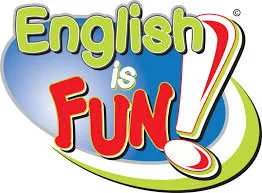Concept
of Fun English Teaching Style
Shin (2011:5) stated Young
learners should have fun with English!
The purpose of this program is to introduce participants to the theory
and practice of teaching young learners in the EFL classroom. Participants will engage in enjoyable
activities designed specifically for young learners, such as songs, chants,
finger plays, and storytelling. In
addition, participants will discuss approaches for teaching language within a
meaningful context and share effective techniques for making language input
comprehensible and encouraging student participation. By the end of the program, participants will
be energized and ready to make their young learners have fun with English.
Our
goal in using "conversations" is for the student to be able to say
each part of the conversation easily and without prompting. Many repetitions are necessary to do this. Repetitions must be fun, well-paced, varied
and interesting. Each conversation
should first be modeled by the teacher performing both parts of the
conversation, but changing position or voice tone to indicate the different
parts. (Puppets are helpful in these situations, or a simple costume such as a
hat.)
How to
Make Fun English Teaching?
Shin
(2011: 6) Teaching English to Young Learners (TEYL) is a rapidly growing field
around the world, and English education is increasingly found at the primary
levels. However, starting earlier is not
necessarily the solution for producing better English speakers. Therefore, what
can EFL teachers of young learners do to take advantage of the flexibility of
young minds and the malleability of young tongues to grow better speakers of
English?
a. Supplement
activities with visuals, realia, and movement.
Young learners tend to have short
attention spans and a lot of physical energy. In addition, children are very
much linked to their surroundings and are
more interested
in the physical and the tangible. Their own understanding comes through hands
and eyes and ears. The physical world is dominant at all times.
1)
Use brightly colored visuals, toys,
puppets or objects Community donations for toys and objects Create a“Visuals
and Realia Bank”
2)
Use Total Physical Response (TPR)
b. Involve
students in making visuals and realia
Having children involved in
creating the visuals that are related to the lesson helps engage students in
the learning process by introducing them to the context as well as to relevant
vocabulary items. Students are more likely to feel interested and invested in
the lesson and will probably take better care of the materials.
1)
Students draw different characters for a
story or make puppets, masks, play-do sculptures
2)
Collaborate with the art teacher to make
the visuals you need for you activities Students contribute their own toys for
the lesson (Show and tell)
c. Teach
in themes
A thematic unit, a series of
lessons on the same topic or subject, can create broader contexts in which to
teach language, recycle language from lesson to lesson, and allow students to
focus more on content and communication than on language structure.
Common themes for YLs: animals,
friends, family, environment, citizenship, shopping, or units revolving around
a storybooks, e websites, celebrities, or movies students link Themes based on
curricula from students’ other subjects are also effective
